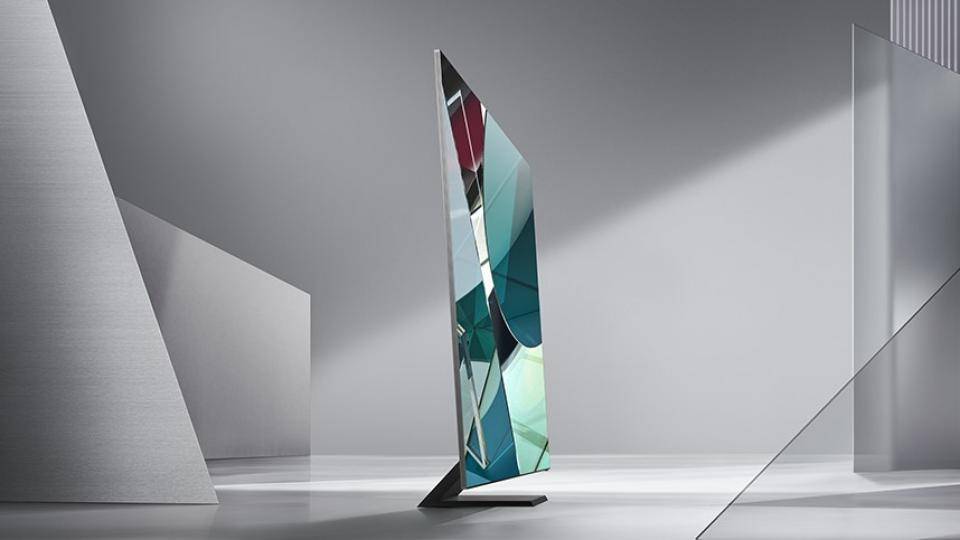Samsung unveils new 8K QLED TVs at CES 2020
Samsung has kicked off CES 2020 with a gamut of TVs, topped off by a new line of QLED 8K displays.
The company claims its flagship Q950TS model provides “unprecedented immersive capabilities”, which boils down to a range of design improvements over Samsung’s previous 8K offerings, all aimed at increasing the performance of 75-inch-plus monitors.
Design-wise, the Q950TS comes with an “infinity screen”, as Samsung dubs it; a near bezel-less display with a 99% screen-to-body ratio.
The TV also comes equipped with a second-generation Quantum Processor 8K, which can automatically upscale non-8K images and reduce noise, as well as an “Adaptive Picture” feature that manages the distribution of light when needed. This could help maintain contrast, for example, when watching darkly lit scenes in a bright room.
In terms of sound, the Q950TS has a feature called “Object Tracking Sound+” that Samsung says can match the movement of audio sound with the movement of objects on-screen. Car chase scenes should be a blast. The TV can also tweak the volume of dialogue in response to in-room sounds, such as a vacuum, using the “Active Voice Amplification (AVA)” feature.
“Samsung’s new range of 8K QLED TVs sound excellent so far, and on paper, they are technically superior to any previous 8K TVs released by the South Korean manufacturer,” writes Expert Reviews’ TV editor, Tom Bruce.
“Unlike its 2019 lineup, which was criticised by rival companies (primarily LG) for failing to meet ‘real 8K’ standards, Samsung’s 2020 8K QLED range conforms to both the 8K Association’s Certified Test Specifications and the CTA’s 8K Ultra HD Display Definition.
“Will Samsung’s new range really ‘reinvent the viewing experience’, though? It doesn’t seem too likely. At least no more so than any of the cutting-edge 8K TVs being released by other industry leaders such as LG , Sony and Panasonic.”
As well as its new 8K QLED TV, Samsung also unveiled new 88in and 150in MicroLED models, to go along with the 75in,88in, 93in and 110in display sizes. As the company showcased last year , these panels are designed to be connected together to create adaptive displays.
Samsung also announced that its novel “Sero” TV (see above), which can pivot between vertical and horizontal formats, will be coming to “several markets” in 2020 – following an initial rollout in South Korea last year.

Your comment